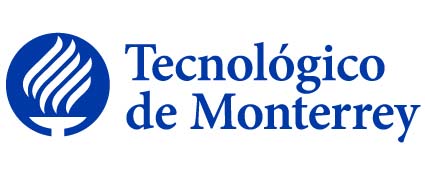
|
|||||
Disciplina asociada:Matemáticas |
|||||
Escuela:
Ingeniería y Ciencias
|
|||||
Departamento Académico:
Ciencias
|
|||||
Programas académicos: |
|||||
Requisitos:(Haber Cursado MA1020) |
|||||
Equivalencia:MA2004 |
|||||
Intención del curso en el contexto general del plan de estudios: |
|||||
|
Es un curso de nivel intermedio que tiene la intención de desarrollar en el estudiante la capacidad de construir metodologías estadísticas como parte de los métodos cuantitativos que le sirvan de apoyo en la toma de decisiones bajo situaciones de incertidumbre y en la elaboración de juicios críticos. Requiere conocimientos básicos de teoría de probabilidad e inferencia estadística así como cálculo diferencial e integral de varias variables y series. Como resultado del aprendizaje se espera que el estudiante aplique los métodos cuantitativos en situaciones de incertidumbre que involucren más de una variable propias de su área de estudio como apoyo en la toma de decisiones, construya distribuciones de funciones de variables aleatorias y derive estimaciones por intervalo y/o pruebas de hipótesis usando las herramientas tecnológicas cuando sea necesario, así como que reconozca los alcances y limitaciones de los modelos y metodologías estadísticas. |
|||||
Objetivo general de la Unidad de Formación: |
|||||
|
Reconocer a la estadística como una ciencia cuya metodología permite evaluar y juzgar discrepancias entre la realidad y los modelos matemáticos propuestos para su explicación. Capacitarse en el manejo sistemático de fenómenos que involucran variaciones aleatorias así como, desarrollar un pensamiento crítico para entender las posibilidades y limitaciones de la investigación experimental. |
|||||
Técnica didáctica sugerida: |
|||||
| Aprendizaje basado en problemas | |||||
Bibliografía sugerida: |
|||||
|
LIBROS DE TEXTO: * Wackerly, Dennis D., Estadística Matemática con Aplicaciones, 7a ed., México D. F. : Cengage Learning Editores, 2010, spaeng, 9708300101, 9789708300100 LIBROS DE CONSULTA: * Rice, John A., Mathematical statistics and data analysis, 2nd ed., Belmont, CA : Duxbury Press, 1995, , 0534209343 * Webster, Allen L., Estadística aplicada a los negocios y la economía , 3a ed., Santafé de Bogotá : McGraw Hill, 2000, spaeng, 9584100726 * Hildebrand, David K., Estadística aplicada a la administración y a la economía , 3a ed., Argentina : Addison-Wesley Iberoamericana, c1997, , 0201625520 * Freund, J.E., Miller, I., & Miller, M, Estadística Matemática con Aplicaciones, Prentice Hall, 2000, |
|||||
Perfil del Profesor: |
|||||
|
(270101)Maestría en Matemáticas ; (270501)Maestría en Estadística ; (400801)Maestría en Física ; (143501)Maestría en Ingeniería Industrial ; (270101)Doctorado en Matemáticas ; (270501)Doctorado en Estadística ; (400801)Doctorado en Física ; (143501)Doctorado en Ingeniería Industrial CIP: 270101, 270501, 400801, 143501 |
|||||
|
|||||
Discipline:Mathematics |
|||||
School:
Engineering and Sciences
|
|||||
Academic Department:
Sciences
|
|||||
Programs: |
|||||
Prerequisites:( MA1020) |
|||||
Equivalences:MA2004 |
|||||
Course intention within the general study plan context: |
|||||
|
This is an intermediate course, designed to provide students with the ability to construct statistical procedures as part of the quantitative methods that are useful for decision making in uncertain situations and in formulating critical judgments. The course requires basic knowledge of probability theory and statistical inference, as well as differential and integral calculus for several variables and power series. As a learning outcome, students are expected to apply quantitative methods in uncertain situations that involve more than one variable and are related to the specific area of study as a tool for decision making; construct distributions of random variable functions and obtain interval estimators and/or hypothesis tests using technological tools whenever needed; and recognize the scope and limitations of statistical models and methods. |
|||||
Course objective: |
|||||
|
Upon completion of this course, students will be able to appreciate that statistics is a science whose methodology makes it possible to evaluate and judge discrepancies between reality and the mathematical models proposed to explain it. Gain competencies in the systematic management of phenomena that involve random variations; develop critical thinking skills to understand the possibilities and limitations of experimental research. |
|||||
Teaching and learning tecniques: |
|||||
| Problem-based Learning | |||||
Suggested Bibliography: |
|||||
|
TEXT BOOKS: * Wackerly, Dennis D., Estadística Matemática con Aplicaciones, 7a ed., México D. F. : Cengage Learning Editores, 2010, spaeng, 9708300101, 9789708300100 BOOKS FOR CONSULTATION: * Rice, John A., Mathematical statistics and data analysis, 2nd ed., Belmont, CA : Duxbury Press, 1995, , 0534209343 * Webster, Allen L., Estadística aplicada a los negocios y la economía , 3a ed., Santafé de Bogotá : McGraw Hill, 2000, spaeng, 9584100726 * Hildebrand, David K., Estadística aplicada a la administración y a la economía , 3a ed., Argentina : Addison-Wesley Iberoamericana, c1997, , 0201625520 * Freund, J.E., Miller, I., & Miller, M, Estadística Matemática con Aplicaciones, Prentice Hall, 2000, |
|||||
Academic credentials required to teach the course: |
|||||
|
(270101)Master Degree in Mathematics and (270501)Master Degree in Statistics and (400801)Master Degree in Physics and (143501)Master Degree in Industrial Engineering and (270101)Doctoral Degree in Mathematics and (270501)Doctoral Degree in Statistics and (400801)Doctoral Degree in Physics and (143501)Doctoral Degree in Industrial Engineering CIP: 270101, 270501, 400801, 143501 |
|||||